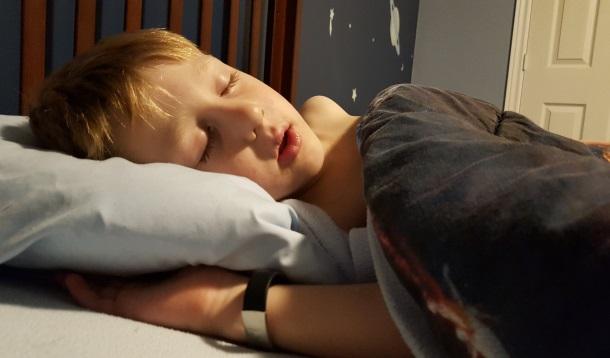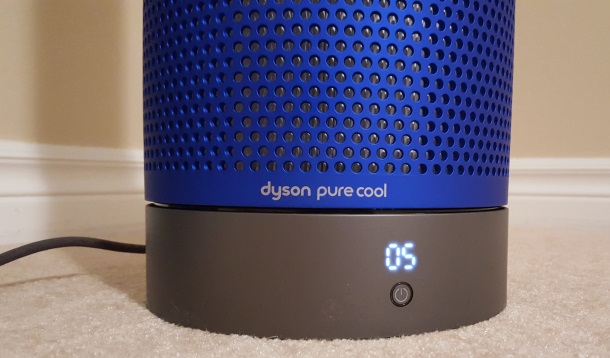
When kidlet was younger, we noticed he was developing bags beneath his eyes, he always seemed to be stuffy, and he was sleeping poorly at night. Our family doctor and his allergist both suggested a trip to visit an Ear Nose and Throat doctor (ENT). After some allergy testing and observing his sleep, we discovered that his sleeping problems were ALL being caused by allergic rhinitis. In diagnosing my son’s problems, we also discovered that all three of us were suffering from it too—and didn't even know.
Our ENT let us know that allergic rhinitis is very common. Many kids and adults suffer from it and aren't even aware. In our quest to improve our son's sleep, we discovered that the air quality in homes is often very, very bad...sometimes up to FIVE TIMES as polluted as the air outdoors. This is because of allergens like mold spores, dust, and fumes. Allergic rhinitis involves multiple allergic reaction symptoms that involve the nose. Things like:
Together, with our allergist and ENT, we’ve been working to create a healthier environment for all of us. Here are some tips they gave us to make our bedrooms a little cleaner and safer—these are tips everyone can use!
Both our allergist and ENT recommended getting a High Efficiency Particulate Arrestance (HEPA) air filter for every room - bedrooms in particular. They range in price from $20 to thousands of dollars - not every HEPA air purifier is created equal (trust us, we’ve tried a few). What’s the difference? It boils down to how effective and how noisy some filters are from their counterparts, ease of use, and what they're capable of doing.
We have settled on the Dyson Pure Cool Purifier, which traps 99.97 per cent of allergens and pollutants as small as 0.3 microns. Not only can allergens make you feel miserable and rob you of a good night’s sleep, ultrafine particles that come from lousy air quality enter the body and have been linked to diseases like heart attacks, strokes, and skin aging.
This purifier is great to use in bedrooms because it has a "Quiet Mark" certification from the Noise Abatement Society and it can be programmed to turn itself off after a pre-set interval, so it doesn’t have to run 24/7. Unlike a lot of the other air purifiers we've tried, the Dyson Pure Cool also has activated carbon granules, so it filters out particles and naturally eliminates odours and fumes in the air. It can filter a large room better than many similar-sized units with fewer “blind spots” – and it can also serve as fan in the summer months!
Best of all, it’s easy to clean and replace the filter (not every HEPA filter is easy to clean!).

You only have to take out a well-used carpet once to know why they’re one of the top allergy culprits. Carpet, frankly, is gross! It traps dust, mold, and dirt like nothing you’ve ever seen. No matter how much you vacuum and steam clean, you’ll never be able to pull out more than surface dirt.
Not only does carpet make it harder to clean your home properly, it’s a lot harder to tell when carpet is dirty when compared to a bare floor. This makes it easy to put off cleaning. Consider replacing your bedroom carpet with good-quality and easy-to-clean laminate or wood flooring.
If you really miss the feeling of carpeting underfoot, collect a few nice throw rugs that can be machine washed on a regular basis.
Buh-bye carpet!
Sorry Fluffy and Fido. Dogs and cats vie with carpeting for the number one spot on the no-no list of many doctors. In fact, your allergist may flat out tell you to get rid of your pets if someone in your home has allergies.
If you can’t get rid of your pets, make sure to keep your bedroom door shut to minimize the amount of dander that makes its way into the room and so they stay off the bed.

Think about it: we spend about a third of our day in bed. Young kids can be in bed up to half of every day! You, me, almost everybody on earth is guilty of not washing the sheets enough. It should be once a week.
Bed sheets collect dust, hair, and skin particles, a favorite food of dust mites – one of the most common causes of allergic symptoms and asthma worldwide. Do you know what you’re reacting to when you react to dust mites? Their feces! And perhaps the exoskeletons of deceased dust mites, too – their lifespan is 10-19 days.
Grossed out yet? You and your kids deserve to sleep on clean sheets. Get in the habit of throwing everyone’s sheets in the wash on the weekend, and buy pillow cases and mattress covers that deter dust mites. Vacuuming your mattress with a powerful vacuum is also a good idea – doing this will remove allergens and dust that lurk below.
Many of us are guilty of using our bedrooms as a proverbial “dumping ground.” Toys, books, piles of laundry, knick-knacks, papers, and hundreds of items that are too important to throw away but have no other home other than the tops of our dressers and end tables. When they do end up in these places, they collect dust and prevent us from dusting and vacuuming as often as we should.
Do a clean sweep and de-clutter your bedroom, so dust and dust mites have fewer places to settle. Put away those Lego sculptures and books and put laundry in the wash so you’re not overwhelmed. Dedicate a good 5-10 minutes every day to de-cluttering your surfaces, corners, and closets until they’re easy to clean. And then keep it that way!
If you or your child experiences any of the following symptoms on a regular basis, you should speak with your family physician about the possibility of allergic rhinitis.
If you do find that you are suffering from allergic rhinitis, your doctor will likely prescribe some medication to help settle down the symptoms, but medicines are a short-term solution, especially for kids. The long-term solution is to change your living arrangements, and the five ideas listed above will help get started!
